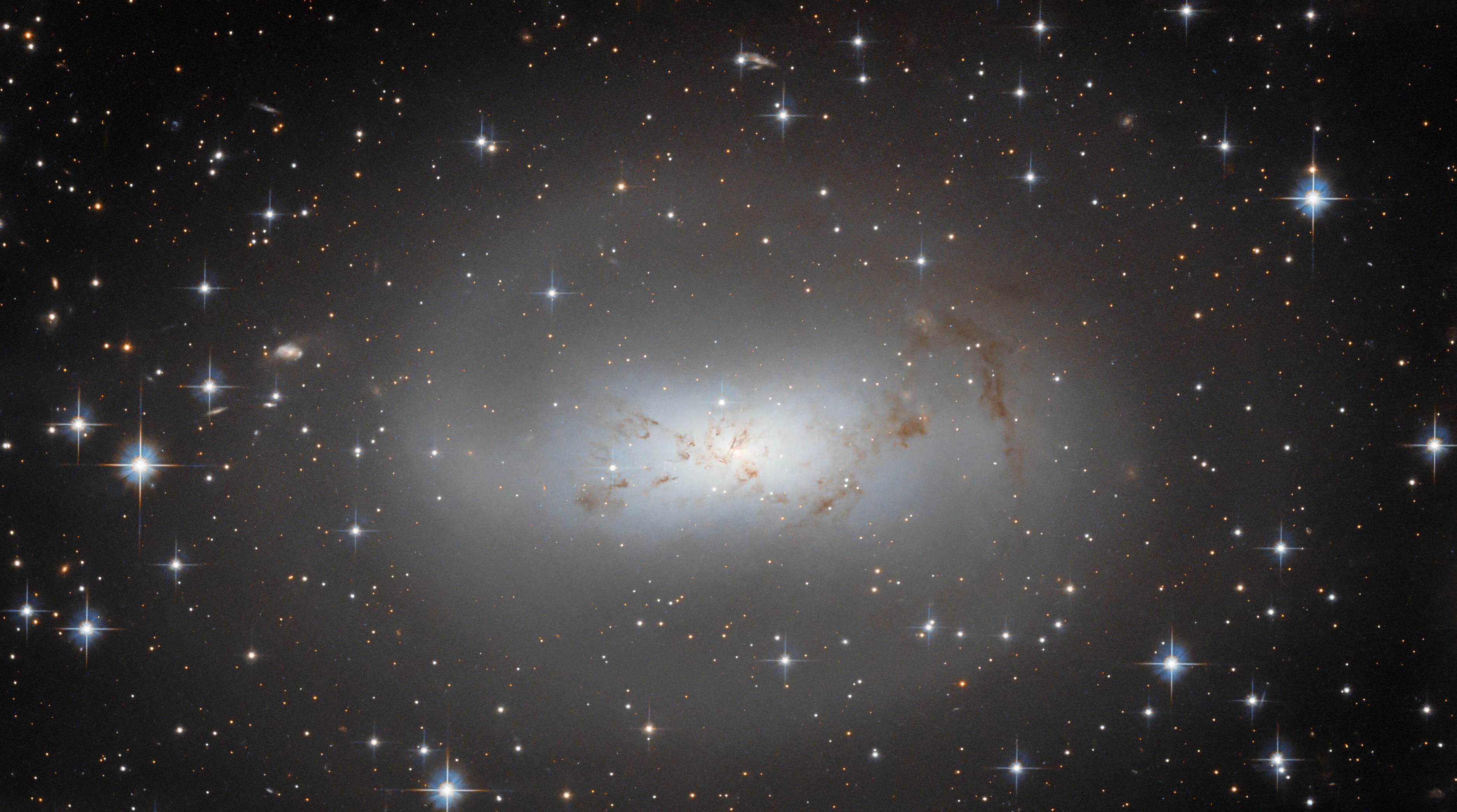2 min read

The highly irregular galaxy ESO 174-1, which resembles a lonely, hazy cloud against a backdrop of bright stars, dominates this image from the NASA/ESA Hubble Space Telescope. ESO 174-1 lies around 11 million light-years from Earth and consists of a bright cloud of stars and a faint, meandering tendril of dark gas and dust.
This image is part of a collection of Hubble observations designed to better understand our nearby galactic neighbors. The observations aim to resolve the brightest stars and basic properties of every known galaxy within 10 megaparsecs. A parsec is a unit used by astronomers to measure the vast distances to other galaxies – 10 megaparsecs translates to 32 million light-years – and makes astronomical distances easier to handle. For example, the nearest star to the Sun, Proxima Centauri, is about 1.3 parsecs away. In everyday units this is a staggering 25 trillion miles (40 trillion km)!
The program to capture all of our neighboring galaxies was designed to use the 2-3% of Hubble time available between observations. It’s inefficient for Hubble to make back-to-back observations of objects that are in opposite parts of the sky. Observing programs like the one that captured ESO 174-1 fill the gaps between other observations. This way the telescope can move gradually from one observation to another, while still collecting data. These fill-in observing programs make the most out of every last minute of Hubble’s observing time.
Text credit: European Space Agency (ESA)
Media Contact:
Claire Andreoli
NASA’s Goddard Space Flight Center, Greenbelt, MD
claire.andreoli@nasa.gov







